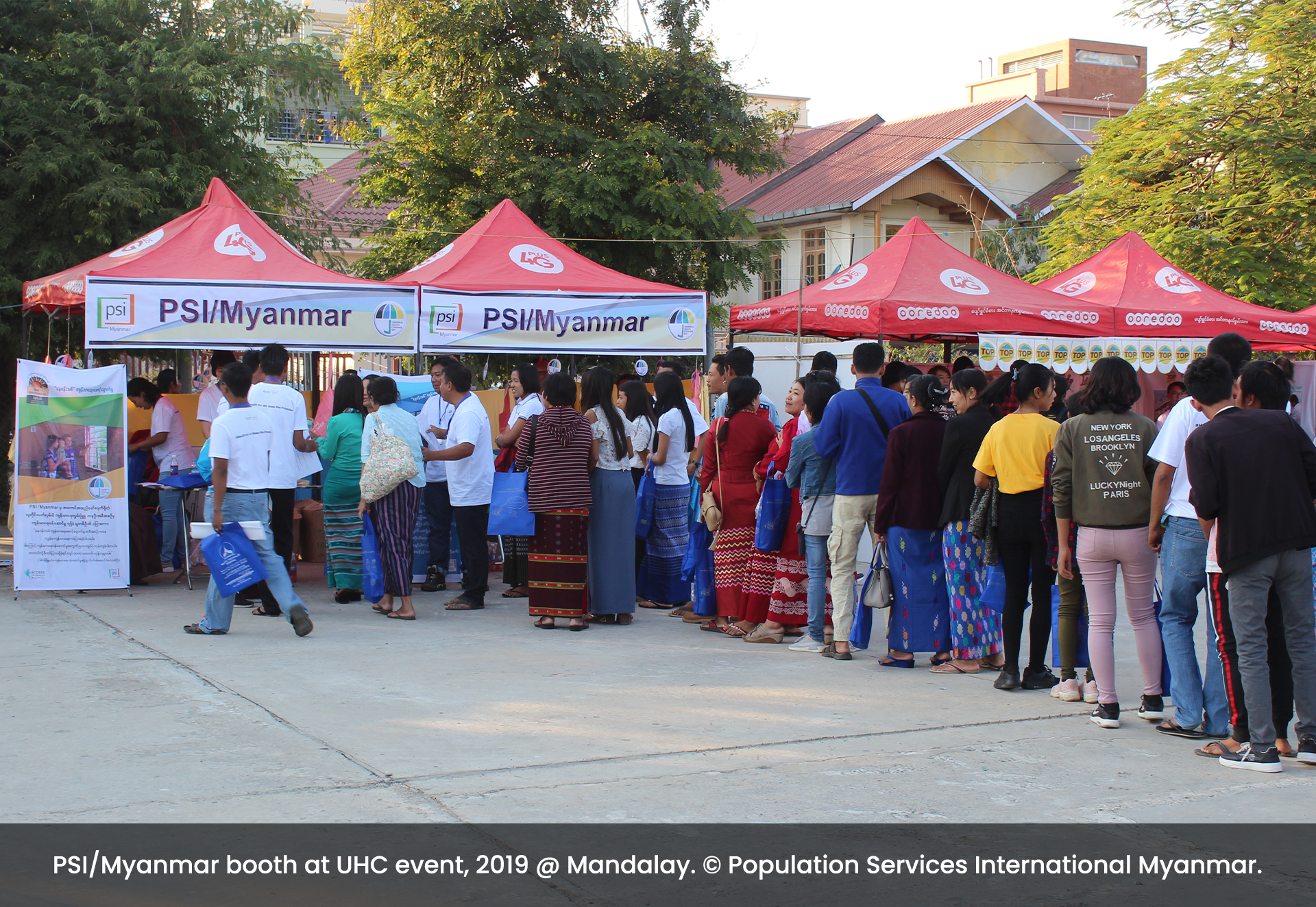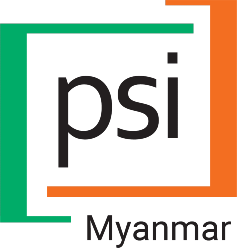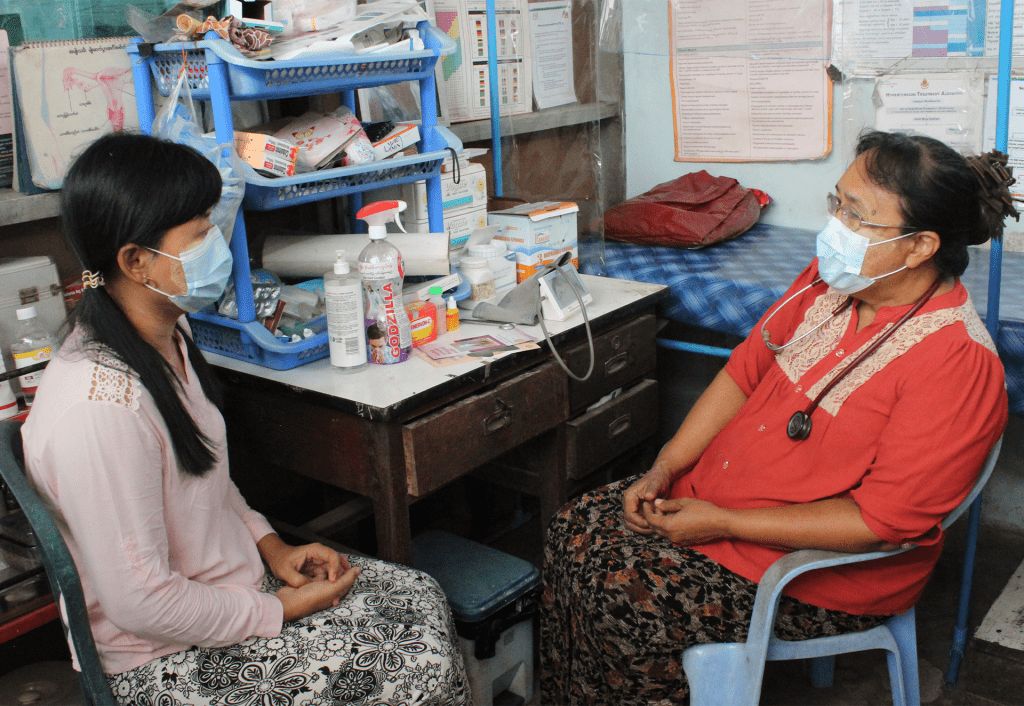CROSS-CUTTING AREAS
PSI Myanmar engages people and communities as leaders in their own health journeys, through an insights-led approach to social and behavior change driven by person-centered research and programs. We harness digital innovation, and research its effectiveness, to accelerate social and behavior change both online and offline. We work to demonstrate how the private sector can help make universal healthcare a reality. PSI Myanmar runs various initiatives, including piloting for social health insurance delivery, expanding access to self-administered injectable contraceptives in remote areas and using digital and social media as tools for good.
DIGITAL HEALTH
PSI Myanmar’s digital health initiatives are designed to align with PSI’s overarching strategy of engaging consumers, shaping markets, and strengthening health systems. Through insights-led approaches, innovative technologies, and strategic partnerships, PSI Myanmar is committed to improving health outcomes, enhancing accessibility, and fostering resilience across the healthcare landscape.
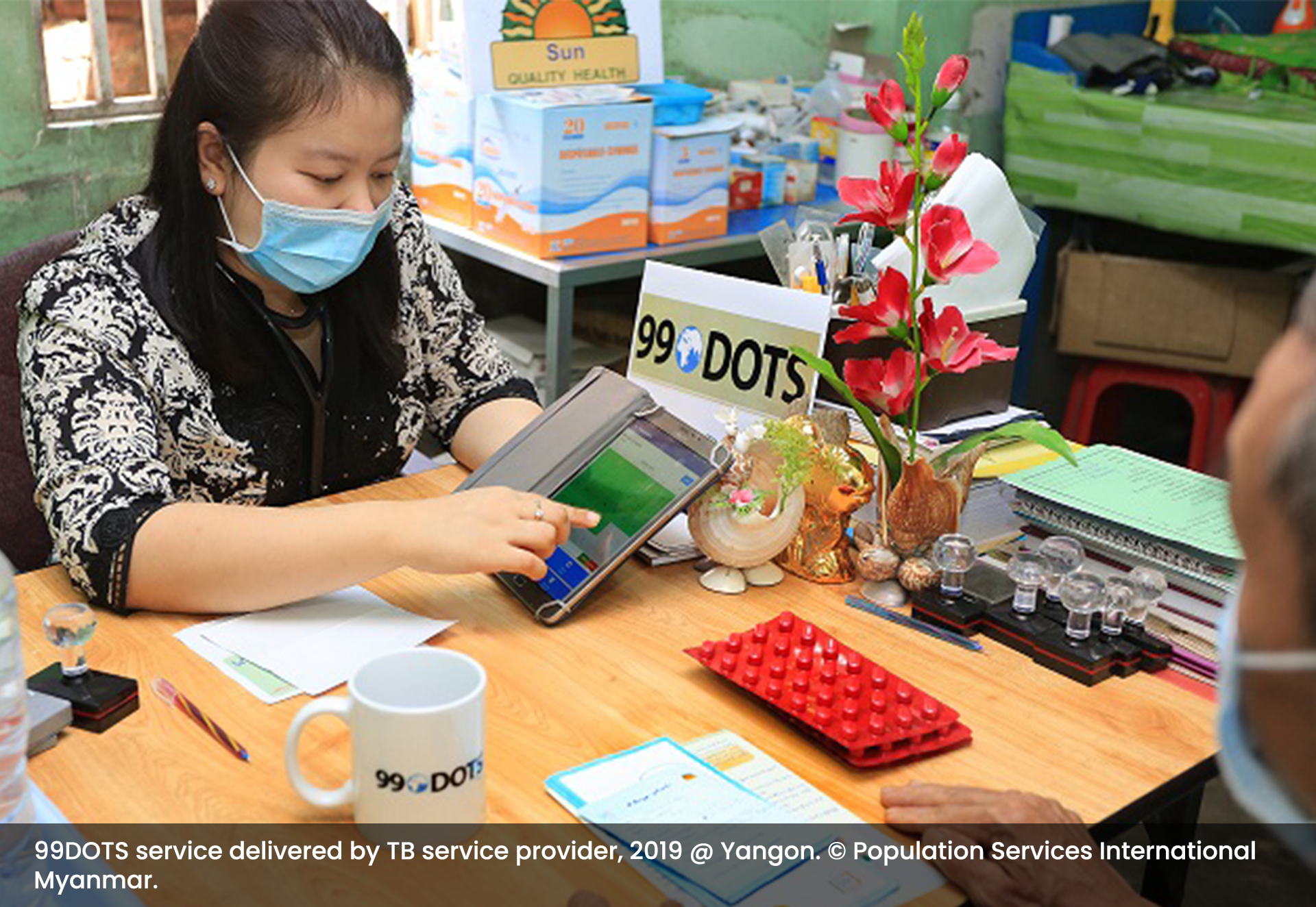
Consumer-Powered Care and Digital Health:
PSI Myanmar has developed self-screening chatbot for tuberculosis (TB) and information chatbot HIV, providing users with vital information. These chatbots, part of the consumer powered care initiative, are integrated with the CareConnect hotline. This service offers personalized health information and referrals to nearby health service centers, ensuring prompt access to necessary care. By empowering consumers with knowledge and connectivity, PSI Myanmar is making progresses in early diagnosis and treatment, crucial for controlling TB and HIV spread.
Empowering Communities with Digital Health Tools
PSI Myanmar uses digital health tools to empower individuals and communities in managing their health. Through solutions like self-screening chatbots for tuberculosis (TB) and HIV information chatbots, users gain access to vital, personalized health information. These tools are integrated with the CareConnect hotline, enabling swift referrals to local health centers. By leveraging these technologies, PSI Myanmar improves early diagnosis and treatment access, helping to control the spread of TB and HIV while strengthening community-driven health surveillance efforts.
Driving Market Growth Through Digital Innovation
Aligned with PSI’s strategy to expand markets for essential health products and services, PSI Myanmar uses digital systems to streamline patient referrals and enhance access to care. For example, the digital TB referral system, integrated with District Health Information Software 2 (DHIS2), helps ensure efficient linkage of patients to diagnosis and treatment centers. These efforts not only remove barriers to accessing care but also engage private healthcare providers, promoting a more dynamic and responsive health market.
Strengthening Health Systems with Digital Transformation
PSI Myanmar's digital initiatives contribute to building resilient health systems by improving collaboration between private and public healthcare providers. The integration of digital health technologies, such as real-time disease notifications and digital workforce tools, enhances system coordination and response capabilities. Additionally, digital platforms like privacy-preserving biometric identification systems for HIV care and digital adherence technologies for TB treatment improve patient management, ensuring continuity of care and better health outcomes across the board.
HEALTH SECURITY
Innovative Disease Notification and Management
PSI Myanmar is dedicated to strengthening health security and pandemic response through innovative solutions and strategic partnerships. By leveraging PSI's proven approaches, PSI Myanmar focuses on real-time disease notification from private sector providers, particularly for malaria and tuberculosis (TB) case reporting as part of private sector disease surveillance. This ensures timely data collection and effective management of these diseases.
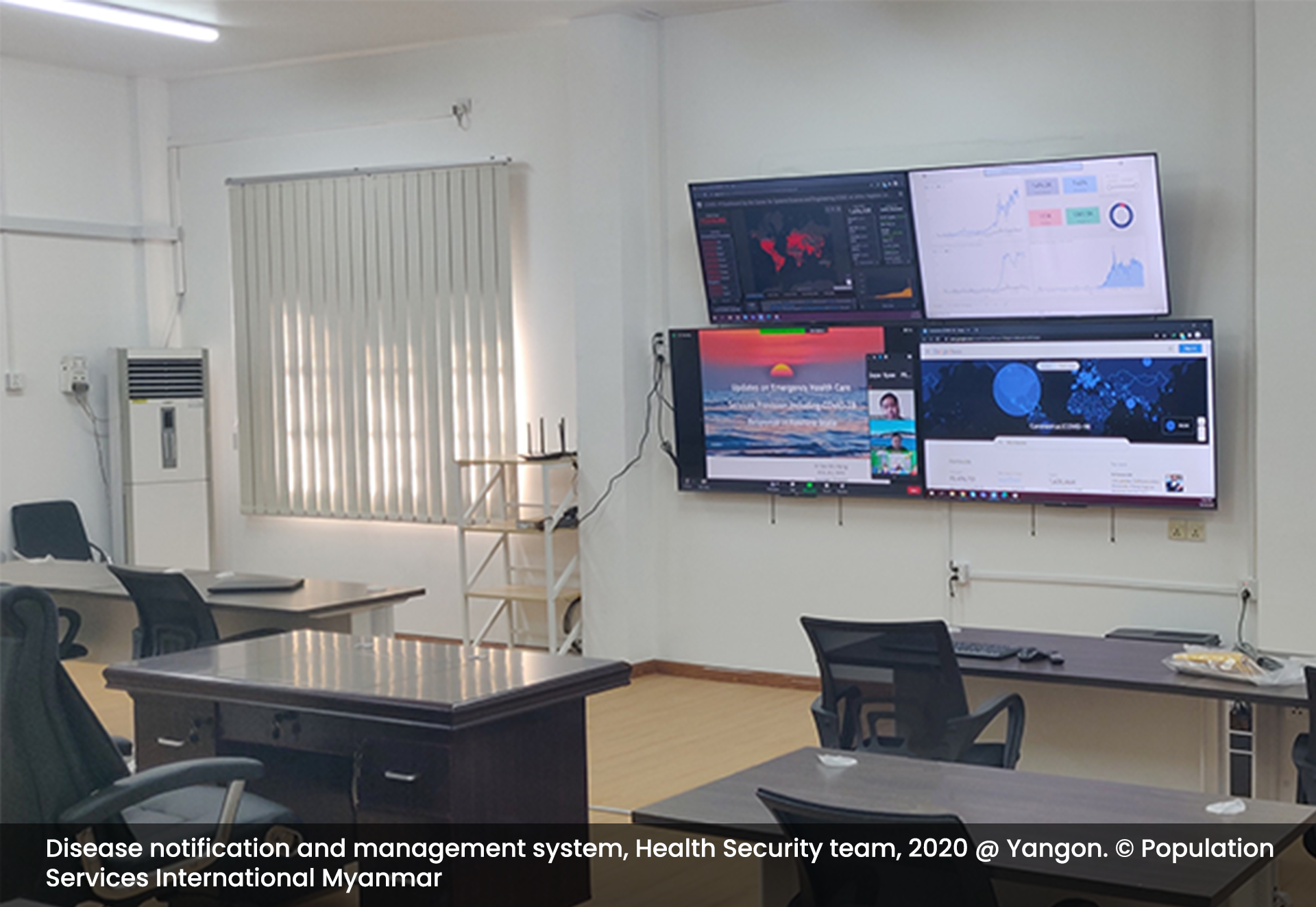
Collaborative Public-Private Partnerships
In addition to collaborating with private sector providers, PSI Myanmar works closely with the public sector to bolster disease surveillance and response. By integrating digital tools and fostering public-private partnerships, PSI Myanmar aims to build a resilient health system capable of managing and containing outbreaks. This collaborative approach enhances the overall resilience of the healthcare infrastructure, making it more adaptable to health emergencies.
Enhancing Local Health Systems and Data Utilization
PSI’s approaches emphasize comprehensive data usage, private sector engagement, and enhancing the capacity of local health systems to respond to health threats. Through digital health innovations, PSI Myanmar supports real-time reporting and rapid response mechanisms, ensuring effective containment and management of infectious diseases.
Community Health Initiatives for Marginalized Populations
PSI Myanmar also provides support for community health initiatives, ensuring marginalized populations receive timely care and information. This commitment to health security is crucial in creating a robust infrastructure that can withstand and adapt to health emergencies, safeguarding public health in Myanmar.
THE ROLE OF COMMUNICATION IN DRIVING TRANSFORMATIVE CHANGES IN GLOBAL HEALTH CARE
Over the next decade, PSI aims to revolutionize healthcare globally by placing the consumer at the center. Whenever possible, we aim to bring quality care closer to the consumer.
PSI’s Digital Health vision focuses on enhancing consumer health and well-being through digital technologies. By increasing access and personalizing the delivery of quality information, products, and services throughout their life course, we strive to empower individuals. The approach of consumer digital health centers around leveraging mobile technology to empower consumers on their health journey. By using mobile phones as an entry point, we provide personalized health information that is just a click away. This accessibility enables consumers to easily access, digest, understand, and apply health-related information, empowering them to make informed choices.
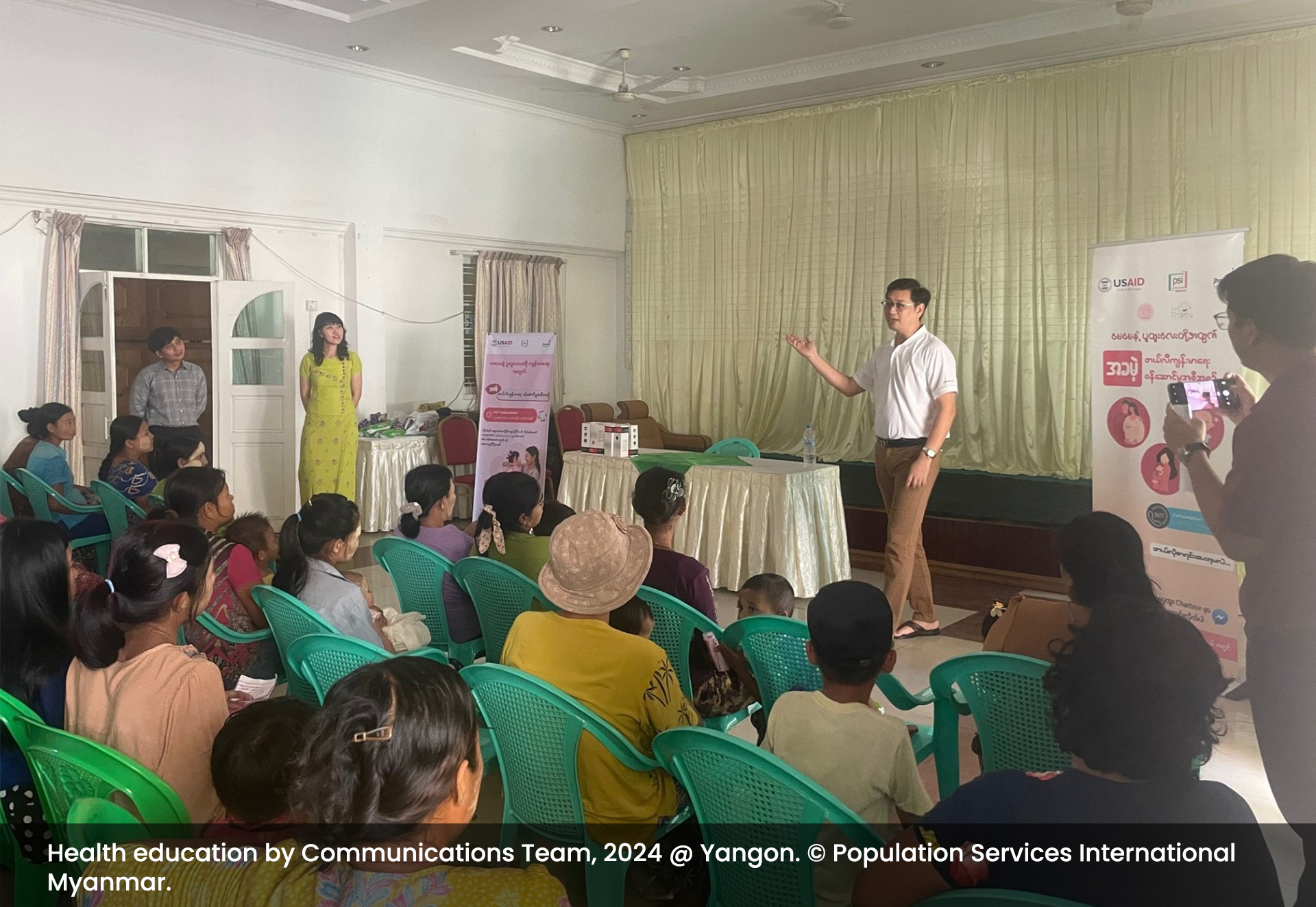
WHAT THE COMMUNICATIONS FOR
Effective communication is crucial across communities, healthcare providers, and public health authorities. Our experienced Communications team leads rapid evidence generation and social behavior change interventions. They design tailored approaches to improve the health of local communities.
- Engagement and Actionable Information: We aim to engage target audiences by sharing actionable information. This ensures that consumers receive relevant and timely health-related content.
- Scaling Consumer-Powered Healthcare: By driving social behavior change and generating demand, we promote personalized, high-quality information and affordable services.
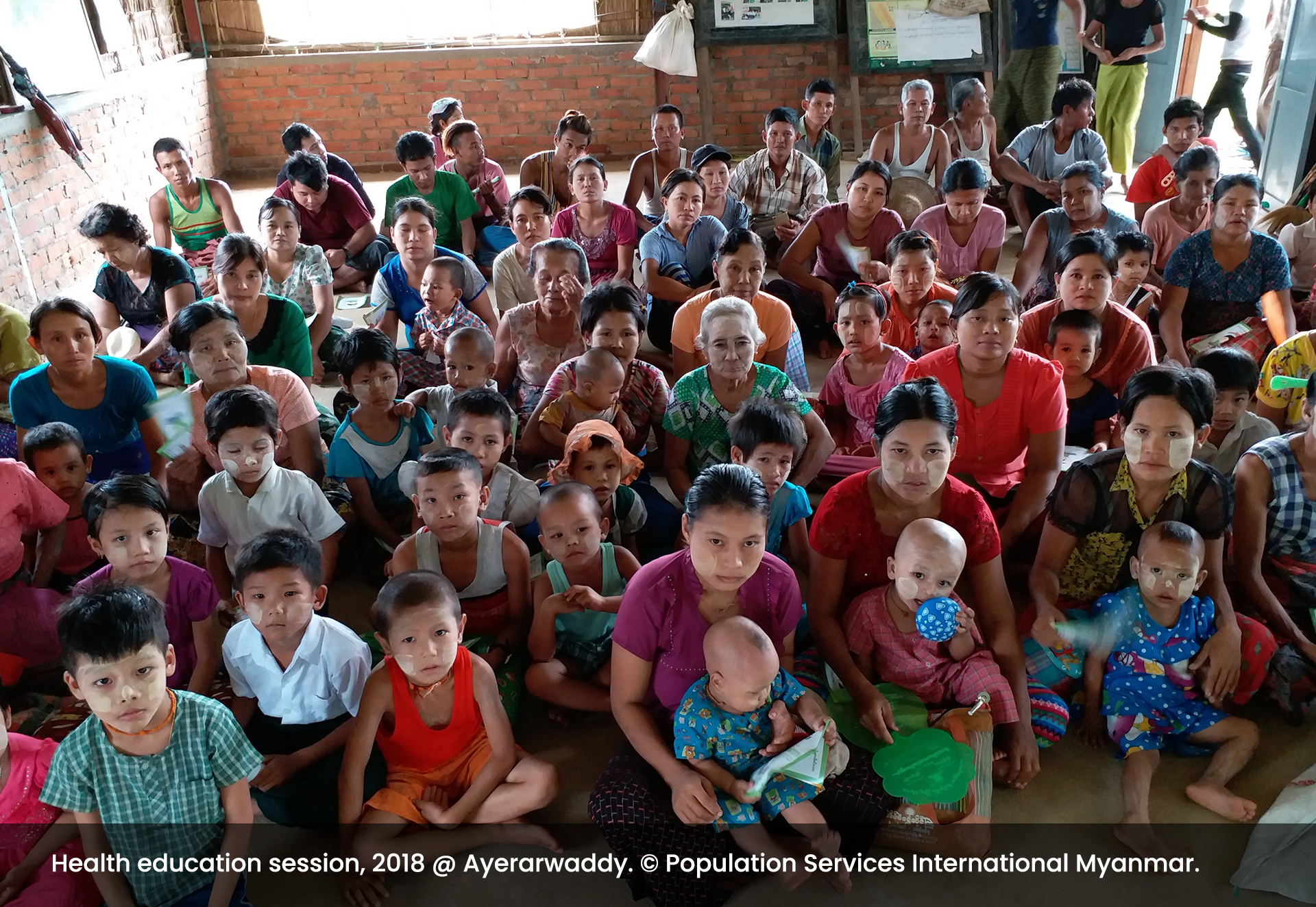
PRIORITIES
- Fast-Forwarding Social Behavior Change Campaigns: Addressing consumers’ primary healthcare needs through behavior change campaigns.
- Personalized Health Information: Ensuring that consumers have personalized health information readily available, making it easy to understand and encouraging better health-seeking behavior.
- Demand Generation for Affordable Healthcare Networks: Focusing on creating demand for integrated networks of affordable healthcare services.
SBCC INTERVENTION FOR ENHANCED OUTREACH EFFICACY
Our strategic Social and Behavior Change Communication (SBCC) intervention aims to maximize the impact of our outreach efforts. Here are the key components:
Harnessing Social Media for Health Promotion:
Social media platforms provide a powerful avenue for health promotion. We utilize these channels to reach a wide audience, delivering personalized health education and referrals.
1. Awareness-Raising Social Media Campaign:
Through targeted social media channels, we disseminate high-quality health information to our intended audience. Our Facebook page serves as a hub for sharing relevant content.
2. Messenger Chatbot for Personalized Health Education:
Our Facebook page’s messenger chatbot facilitates social engagement. It offers personalized health information and guides users toward teleconsultation, diagnostics, and healthcare services.
3. Addressing Social Stigma and Barriers:
Our communication messages aim to reduce social stigma associated with seeking healthcare. By addressing barriers, we empower individuals to access essential services.
4. Creating Compelling Digital Assets:
We design tailored messages and eye-catching visual assets to attract and engage our audience effectively.
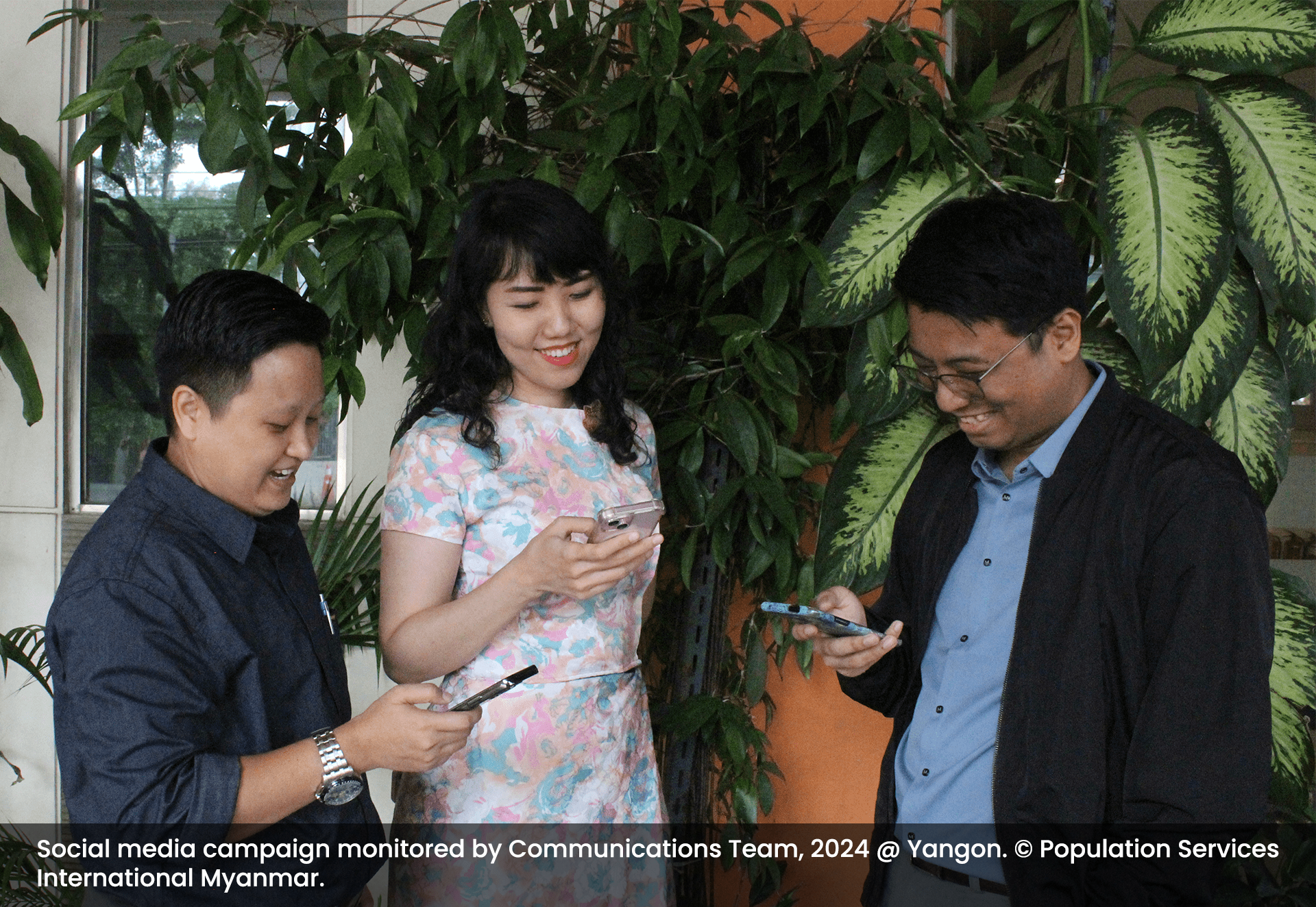
Leveraging Health Communications to Enhance Health Literacy and Promotion:
Our strategic communication interventions enhance individuals’ health literacy through various channels, including mass media, mid-media, printed materials, and community-engaged promotional events.
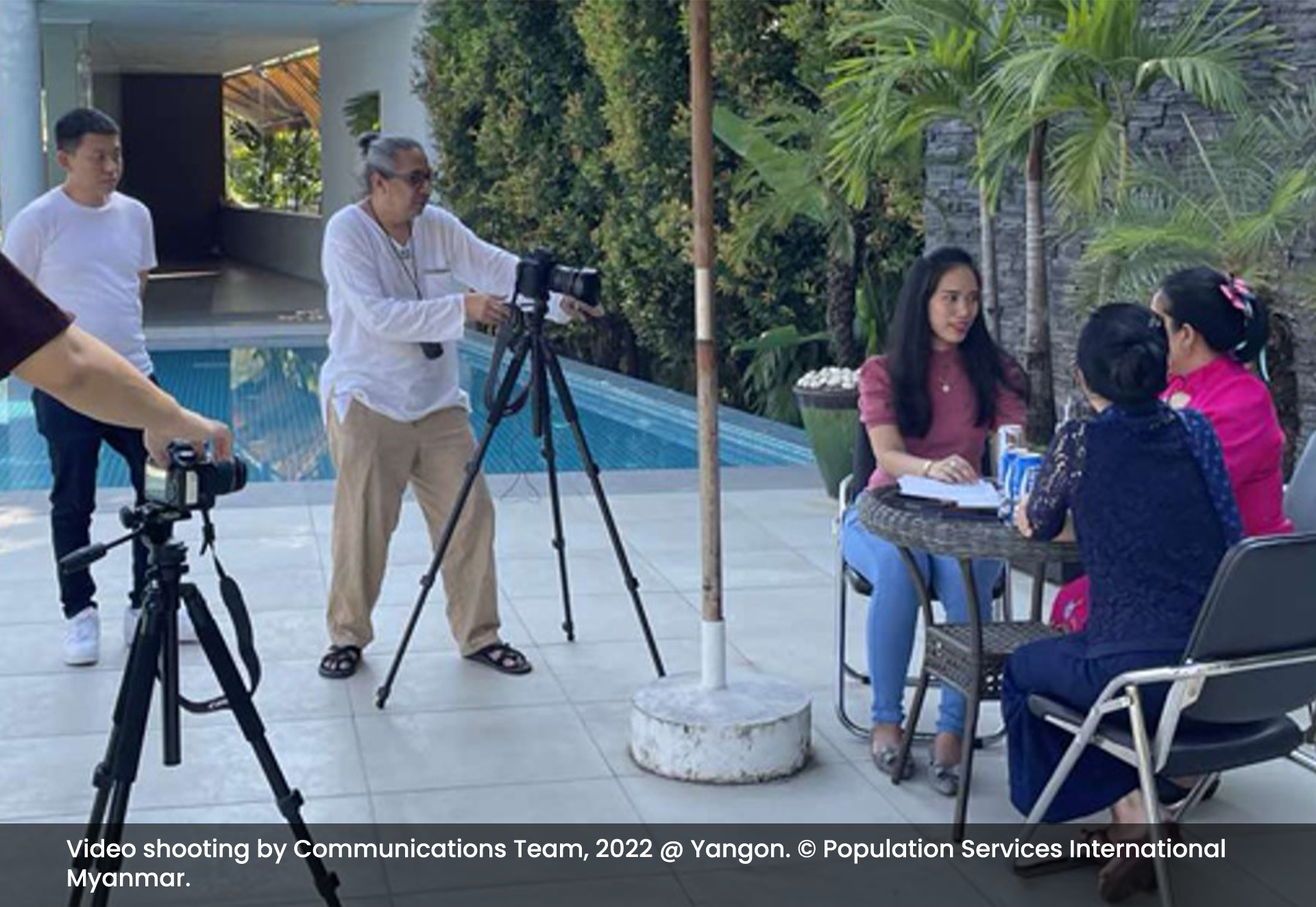
Producing Communication Materials for Knowledge Enhancement:
- Emotion-Driven Educational Videos:
We create heartfelt videos that evoke emotions and drive behavior change. These educational materials resonate with viewers, encouraging positive health choices.
- Developing IEC materials:
Our evidence-based SBCC materials improve people’s understanding of health issues, empowering them to make informed decisions and take better care of themselves.
Community Network Demand Generation:
We actively engage with the community network to create demand for health services. By fostering dialogue and understanding community needs, we encourage individuals to seek healthcare.
Promotional Events for Community Engagement:
Both online and offline events play a crucial role in community engagement. We organize activities to foster community participation and enhance early case detection.
Engagement through Social Influencers:
Collaborating with social influencers allows us to spread health-related information effectively. Their reach amplifies our messaging and encourages positive health behaviors.
